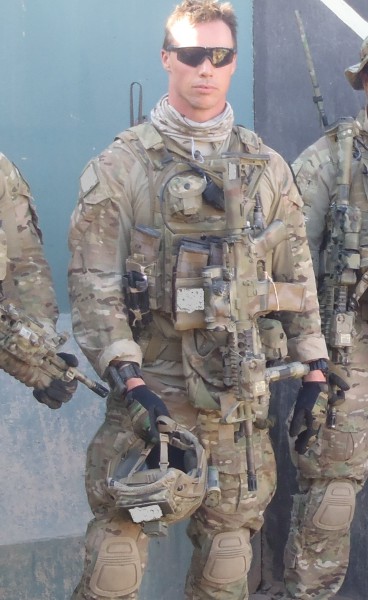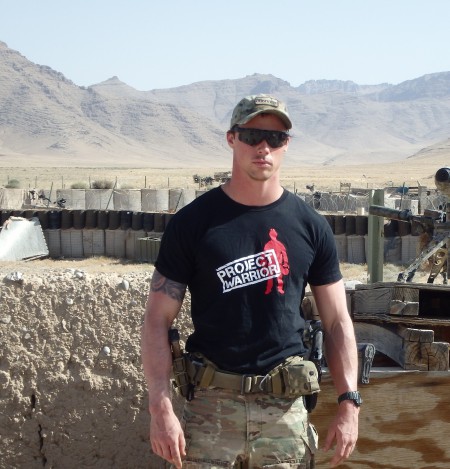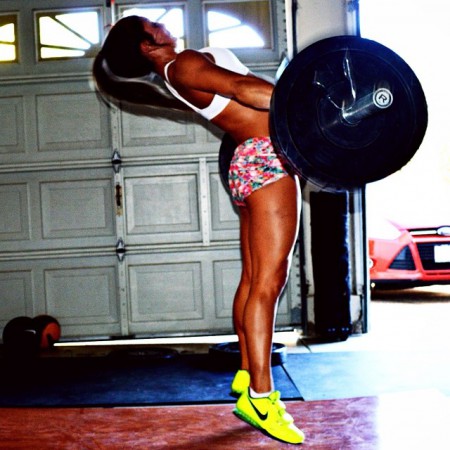 This article is written by my good friend Shaun Trainor, owner and operator of Project Warrior in Fairy Meadow, New South Wales, Australia. Shaun spent 12 years in the Australian military with the last half of it in 2nd Commando Regiment, a special operations unit.
This article is written by my good friend Shaun Trainor, owner and operator of Project Warrior in Fairy Meadow, New South Wales, Australia. Shaun spent 12 years in the Australian military with the last half of it in 2nd Commando Regiment, a special operations unit.
The subject of Justin’s recent post (Category Programming) on training around an erratic schedule is one that is near and dear to my heart. One of the things that used to frustrate me when I was trying to design a training program was that almost everything out there has a weekly structure. Obviously that makes sense for the majority of people, because they have a Monday-to-Friday job, but it makes it difficult for those of us who work in the military, law enforcement, or emergency services.
I spent 12 years in the Australian military; the last 6 in SOF. Obviously this was a job that required a high level of physical preparedness, but it was also a job that at times made it extremely difficult to train effectively. On any given day I was doing anything from hanging around the office, drinking coffee, to climbing a caving ladder up the side of a ship with 90lbs of gear strapped to me.
The problem
Say I’m running a basic Texas Method and Friday is my squat intensity day. But what happens if I spent Thurday night in an exercise that involved clearing a 30 story office building until 4AM? How do you think my squats are going to go?
The obvious answer is that I take the session off, or just go really light, and it’s no big deal. Everybody has life interfere with their training. However not everybody works an unpredictable schedule that may involve intense physical demands for a week or two on end. There is only so much that this can happen before the whole effect of the program starts to be destroyed.
Military personnel – especially those deployed in combat roles – as well as Police, Fire & Rescue, and paramedics can all been dicked around so much as to make a weekly program almost unworkable. This was certainly my experience.
Weekly Template
After spending quite some time struggling to implement a normal strength training program as an operator, I then tried a template solution. I determined what sessions I wanted to do in a standard week, and then shuffled them around week to week to fit what was going on. For example, you might decide that you were going to squat twice, deadlift once, press once and bench once. You can then decide what you’re going to do each day, depending on what’s going on with work/life.
This worked a little better than trying to stick to a weekly program, but I didn’t love it. Depending on how busy my week was, I’d often get behind my allocated sessions. If the disruption last more than a few days – as it often would – then the template didn’t work very well.
Rotation system
After that I tried a much more basic approach. I realised that any sort of weekly program wasn’t going to work for me when my job was busy, or when I was deployed. There’s too many variables when you’re overseas, and you often don’t know about a mission until a day before. Detailed planning in these sort of situations doesn’t work very well.
I tried a much more basic solution: a Rotation System.
- Squat
- Deadlift
- Press
Each training session, I would hit one of the lifts. The next session, whenever that was, I would move on to the next lift in the order. The order is designed so that you can still hit the sessions back to back if you’re lucky enough to get three days in a row to train.
No matter how much (or little) you’re getting to train, your work is balanced between the main lifts.
Rep Scheme
The rep scheme for the day is down to you, but considering this is a very basic program I usually run a 3×5 or 5×5. There isn’t a great need for complex rep schemes because this isn’t a long-term solution; it’s just something that’s designed to keep you ticking when work is sucking donkey dick. If you want some higher intensity you could work up to a heavy triple then drop down and hit a 3×5.
Accessory Work
Depending on how physically demanding your last few days have been, you can either add in some assistance work or simply leave it there. If you’re beat up and tired, then at least you got some squats in. If it’s been an easy day or two, then you might throw in 1-2 accessory exercises. Keep the total number of sets at six or under for your accessories. The whole reason you’re doing this type of skeleton program is because training isn’t your main focus at the moment. If you’re overseas or on shift for Law Enforcement, then you don’t want to cripple yourself with assistance exercises because you don’t know what the coming days will bring.
Conditioning
Conditioning is going to be driven by context. Some people will be able to let this slide for a few weeks without much hassle, others will need to keep up regular conditioning as well as their lifting. I fall more into the former catagory, but if you are in the latter then at least keep it either very short or very long. Either do something like a single Tabata or a few Prowler sprints, or go for a long, easy run. Don’t get sucked into doing the 10-30min ‘mess you up’ CrossFit type workouts.
Bench Press
I’m sure there are people who are already agitated about the lack of bench in the rotation. If you want to keep benching during this, you have two options. You can alternate press days with bench days, so that every second time you get to a press day you bench press instead. That’s what I personally did. The other option is to include it after you press. If you take this option then I wouldn’t press more than a 3×5.
Deadlift
Whether or not you deadlift is going to depend on your specific situation. If you’re overseas and you might have jobs coming up, or if you’re wearing armour all day – on a CQB course, for example – then you probably don’t want to pull heavy. A couple of times I went out on missions with sore legs. It sucked a little bit, but it wasn’t terrible. I only did it once with bad DOMS in my lower back, and it was not a fun night. Trying to clear compounds in Helmand with my back blowing up wasn’t a good idea. However if you don’t need the same level of readiness at a moment’s notice, then there isn’t a problem deadlifting as usual.
If you don’t want to do heavy deads then you’ll need some other sort of posterior-chain exercise. RDLs and good mornings are an obvious choice. While power cleans aren’t a bad option you’ll probably need to still do RDLs as well.
Speed and banded deadlifts work well to keep your numbers up without having to pull heavy weights. If you’re going to do speed deads, avoid the temptation to start putting more and more weight on the bar until suddenly it’s a heavy triple.
I spent another six months in Afghanistan last year, and on Justin’s advice the majority of my deadlift days consisted of RDL 5×6, followed by 3×15 banded good mornings. It let me bring up my posterior-chain without the sort of fatigue that deadlifts can bring. When I got back to Australia my deadlift bounced back to where it was before pretty easily.
Short-term Solution
Is a rotation system the perfect training program? Absolutely not. It’s designed to be used when work or life prevents you from using something better. It was my answer to the unpredictable and arduous nature of my profession. It should keep you ticking over, and split your work between the main lifts in a simple to program fashion.
Since my last trip I’ve retired from active duty and opened my own S&C facility (Project Warrior). I use a variation of this with any of our new lifters that we get who can’t, for whatever reason, commit to a weekly program.


